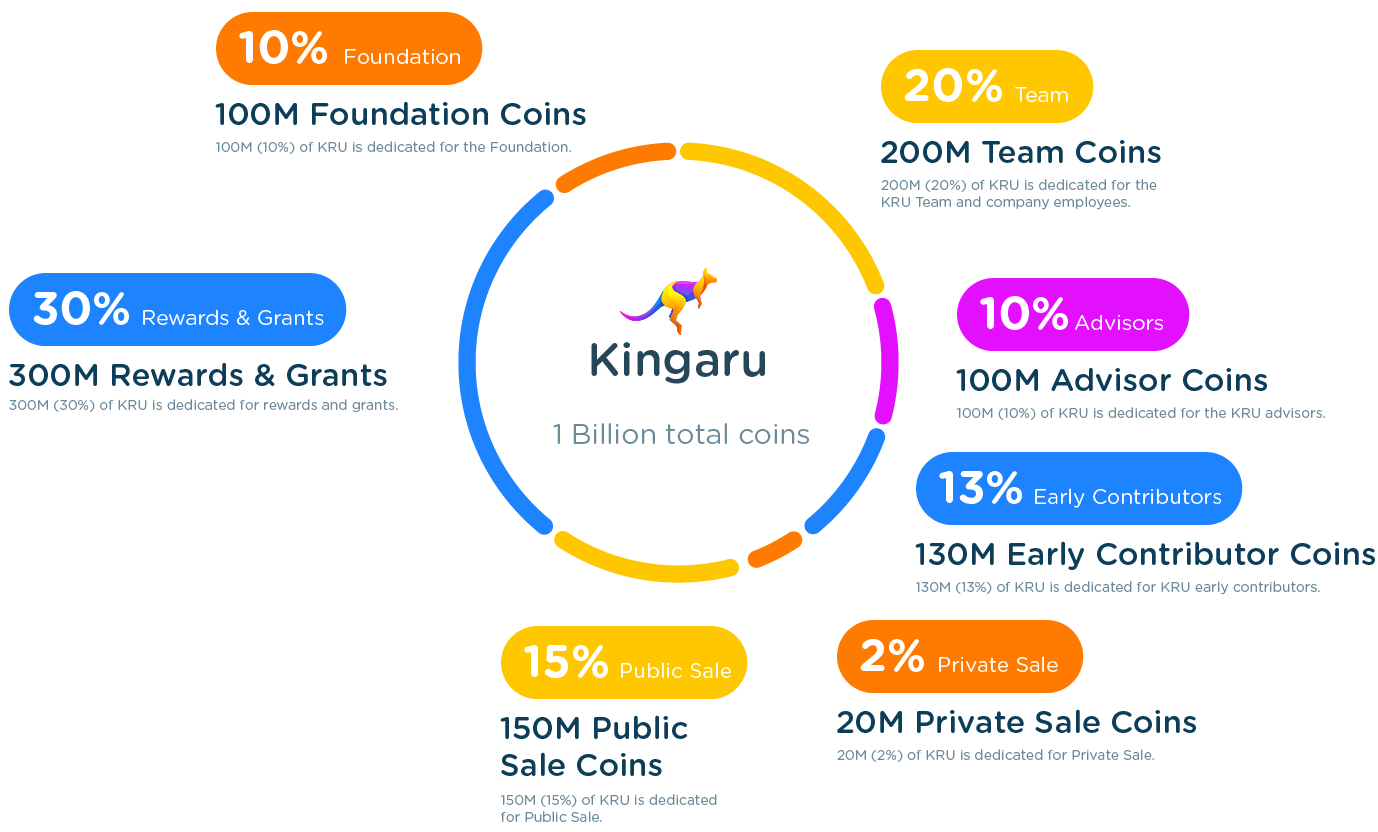Everyday transactions in crypto have been complicated and difficult based on two major issues, time and cost.
Joe walks into the local grocery store and wants to pay for groceries in bitcoin.
If the local grocery store allows Joe to purchase using current checkout process, Joe would need to wait between 5 mins and 3 hours on average.*
https://support.bitpay.com/hc/en-us/articles/360025484512-Missing-transactions-Why-is-my-transaction-unconfirmed-
If Joe wants to wait less time, he can pay higher gas fees on certain networks.
Usability
Kingaru is designed to be used across multiple e-commerce, retail, metaverse, and NFT platforms
01
Low transactions costs
No high gas fees
02
Backed by a treasury
KRU is backed by a liquid treasury for vendor reimbursement
03
Immediate confirmation
The Kingaru Network confirms almost immediately
04
Kingaru use cases
Kingaru is the Proof of Stake blockchain focused on real life use cases.
E-Commerce purchases
Rewards Distribution
Interoperable / Interexchangeable Loyalty Points
Supply Chain Transparency
Decentralized Trade Finance
Kingaru tokenomics
Understanding KRU

Bringing two industries together
What makes KRU so unique?
$33T
Worldwide e-commerce
and retail sales

$2T
Crypto
https://www.statista.com/statistics/443522/global-retail-sales/
https://coinmarketcap.com/
https://www.businesswire.com/news/home/20211109005306/en/Digital-B2C-B2B-eCommerce-Sales-Reach-New-Levels-of-Growth-Post-pandemic-Forecast-to-Reach-6-Trillion-in-2022

Challenge
Why commerce and crypto don’t currently work well together
It’s too slow. Average transaction time for major blockchains is 5 minutes – 3 hours.
The cost of transfer can be unstable and expensive, making it difficult for retailers to plan expenses.
Transferring to traditional cash is complicated.
Lack of consumer adoption due to complexity of technology.
Lack of retailer networks that accept crypto.
Solution
How KRU solves the problems
KRU takes just seconds to transact and finalize the exchange.
Cost is minimized due to our delegated proof of stake technology.
In addition to exchanges, KRU is backed by a treasury allowing vendors to exchange for local currency.
Simple technology allows for quick adoption from consumers.
Large retailer networks allows for many places to utilize KRU.

Kingaru e-commerce process
1
User browses shop and adds item to their cart.
2
User goes to checkout and selects “pay with KRU” as their payment method.
3
A QR code / wallet address window / widget would appear, instructing the user where to send KRU and how much to send.
4
The user would then send the appropriate amount of funds and once the funds were received, the transaction would be approved, and the page would show “order complete”.
5
KRU would then be sitting on the shop / vendors crypto wallet for them to see and use.
6
Vendor could invoice Kingaru and be paid, or hold on to KRU and exchange later.
7
The vendor would send KRU to Kingaru treasury wallet address and Kingaru would then ACH the vendor USD.
Kingaru retail
process
1
User browses shop and goes to checkout counter.
2
User scans the retailers QR code.
3
A QR code / wallet address window / widget would appear instructing the user where to send KRU and how much to send.
4
The user would then send the appropriate amount of funds and once the funds were received, the transaction would be approved, and the register would show “order complete”
5
KRU would then be sitting on the shop / vendor’s crypto wallet for them to see and use.
6
Vendor could invoice Kingaru and be paid, or hold on to KRU and exchange later.
7
The vendor would send KRU to Kingaru treasury wallet address and Kingaru would then ACH the vendor USD.
Roadmap
Major Kingaru milestones

